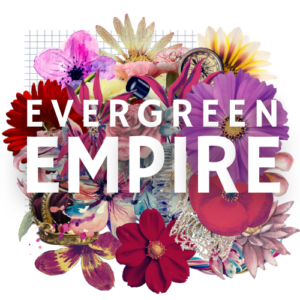Ethical Riders
“We met as a group and have decided we’d like the dashboard’s graphs to be red if the metric is trending bad and green if the metric is trending in the right direction.”
Ok, what would you do here?
Because the client is asking for a change that would make the work inaccessible to people who are red-green colorblind.
Just do it because they are paying you?
Push back?
I pushed back. Here’s what I said:
I strongly advise against this. You told me during our initial conversations that a key tenet of your [name-drop-worthy] foundation is equity. Choosing red/green makes you inequitable. Like I recommended in my initial sketches of the dashboard, let’s use orange and blue instead. Need another reason? Your logo is red. So assigning red to the bad data would conflate “bad” with YOU. Don’t do this. You hired me to give you the best possible advice and that’s my advice.
Dear Reader, they pushed back on my push back. They told me to do it anyway.
And that’s when I wish I could’ve quit the project.
Because now we were consigned to create something I would never be able to share. What good is having a name-drop-worthy client if you’re so embarrassed by them that you’d never drop the name?
I was venting about this on a call with my Boost & Bloom students (to show that even seasoned entrepreneurs can have things turn sour) when one of them asked me:
Could you put ethical riders in your contract?
Holy crap.
Yes.
Of course I can.
You can put anything you want in your contract. (Granted your prospective client may retreat from the engagement – but you’d have your dignity intact.)
Until now, I’ve really only thought of ethical riders when it comes to speaking panels.
After I screamed into the internet about manels in data visualization, I wrote up an inclusion rider that stipulates that my role in the conference is contingent on the requirement that other featured speakers and panelists are proportionately representative of United States (or wherever this is taking place) demographics, meaning approximately 50% women, 50% people of color, 20% people with disabilities and 5% LGBTQ. I can cancel at any time with no notice if this stipulation is not met.
Inclusion riders are a way for people with privilege to open up space for those who have been traditionally overlooked.
This notion of an inclusion rider came to my attention through the Annenberg Inclusion Initiative, where they work with actors to include such riders in their contracts, laying out the expectation that, collectively, cast and crew need to be an accurate reflection of society. They even provide a contractual template.
Employment contracts can contain morality clauses that say you can be fired with cause for engaging in acts that damage the company’s image or reputation.
With these specific models already laid out for us, I’m curious what it could look like to apply the same idea more broadly so that I’m not committed to begrudgingly making this inaccessible dashboard.
I’ve got a great attorney who can surely help craft the right language. But she’s going to ask me how we’ll define “ethics” – just in the same way that those morality clauses have to spell out precisely what acts violate company morals, with specific examples. And this can be especially tricky in areas like accessibility, where the possibilities are rapidly expanding.
But let’s not allow the trickiness to keep us from even trying.
The integrity of aligning our work to our values is too important to give up just because it sounds like it’ll be hard.
As is so often the case, we often learn we have boundaries after they’ve been violated. So, given your hindsight, what specific examples would you want to see included in ethical riders for data visualization? Email me with a nomination.

